ELEVATE. OUTPERFORM.
LiFePO4 TECHNOLOGY
Longer life,
extended peace
of mind.


Re:Start.
Repeat.
Step into a new era of battery innovation. Our LiFePO₄ batteries are engineered to outperform traditional options with smarter power, longer lifespan, and reliable safety features.
Performance Excellence
Higher energy density, higher efficiency & superior power – Lighter weight, stable power delivery, reduced recharge times & smoother starts.
Zero Maintenance
No acid – no corrosion cleanup, no topping up.
Worry-free ownership.
Seamless Functionality
The built-in Battery Management System (BMS) improves safety and protects the battery and vehicle system.
Lithium Ferrous Phosphate vs
Lead Acid
Lead Acid
Energy Density
Warranty
Lifespan
Cycle Life
Shelf Life
Sulfation
Ignition Temp
BMS Protection
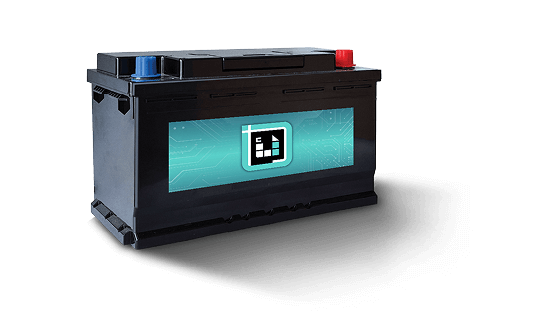
Lithium Ferrous Phosphate
(LiFePO₄)
(LiFePO₄)
>140 Wh/kg
3 Years
3 - 8 Years
2,000 Cycles
> 1 Year
N/A
800°C
Short circuit
Reverse polarity
Overcharge
Over-discharge
Over-temperature
Reverse polarity
Overcharge
Over-discharge
Over-temperature
Lead Acid
(PbSO₄)
(PbSO₄)
35 Wh/kg – 50 Wh/kg
6 Months – 2 Years
9 Months – 4 Years
<500 Cycles
3 - 6 Months
Yes
600°C
N/A
Not All Batteries Are Created Equal
Not all lithium batteries are created equal. This infographic shows how different chemistries
perform across 6 key areas: energy, power, safety, performance, lifespan, and cost.
- Safest lithium chemistry
- Stable crystal structure that resists oxygen release, unlike cobalt-based cathodes
- Does not release oxygen during decomposition
- If it fails, it vents gas instead of igniting
- Stable at 150°C - 200°C
- Thermal runaway at 270°C, significantly higher than NMC or LCO
- Resistant to self-ignition during abuse testing
- Puncture, penetration
- External short circuit
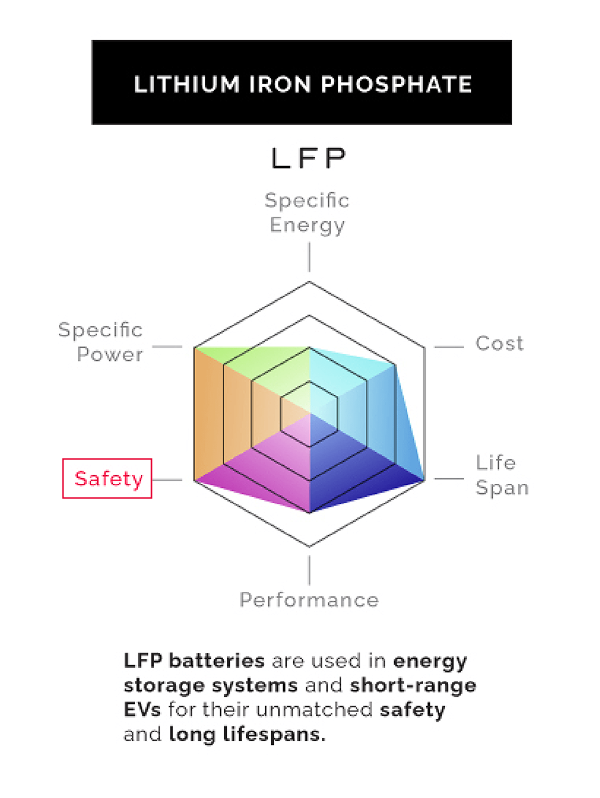
Source: Miao Yu et at. (2019) BCG, Battery University
- Safest lithium chemistry
- Stable crystal structure that resists oxygen release, unlike cobalt-based cathodes
- Does not release oxygen during decomposition
- If it fails, it vents gas instead of igniting
- Stable at 150°C - 200°C
- Thermal runaway at 270°C, significantly higher than NMC or LCO
- Resistant to self-ignition during abuse testing
- Puncture, penetration
- External short circuit
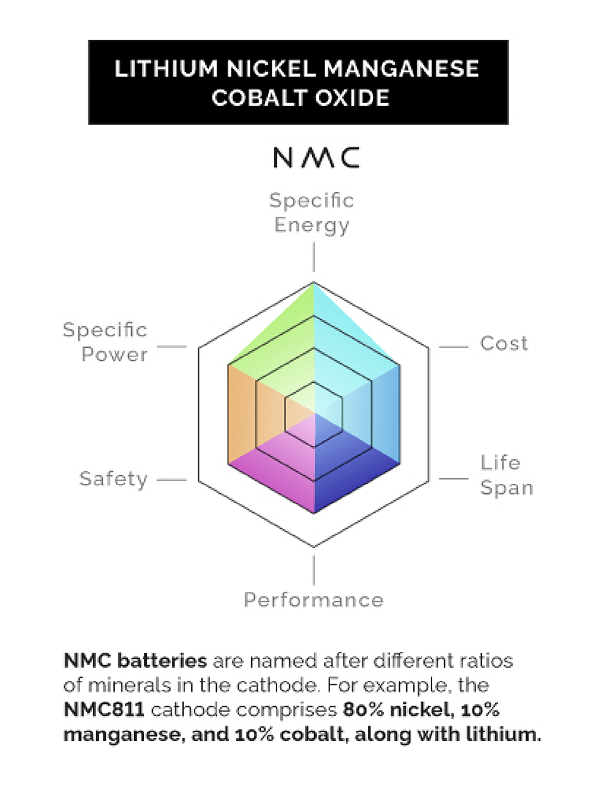
Lithium Nickel Manganese Colbalt Oxide (NMC)
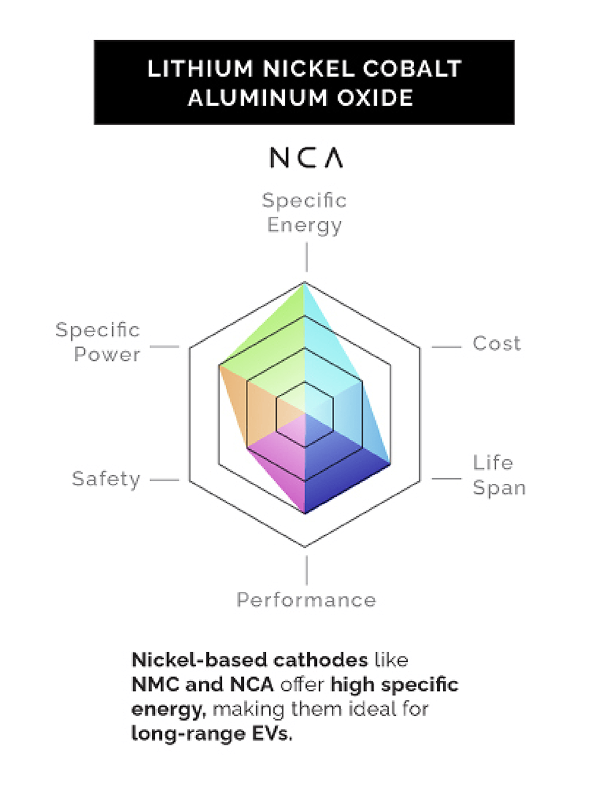
Lithium Nickel Cobalt Alumium Oxide (NCA)
Lithium Cobalt Oxide (LCO)

Lithium Manganese Oxide (LMO)

Lithium Titanium Oxide (LTO)